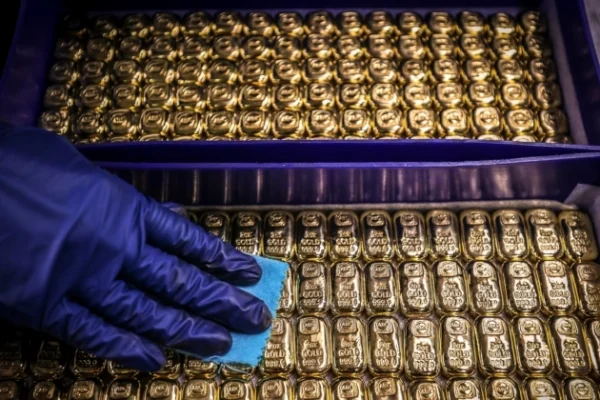Gold prices have hit a historic high, with the People’s Bank of China, which had been continuously increasing its gold reserves for 18 months, continuing its pause on gold purchases since May this year.
Since the beginning of the year, the overall trend of gold prices has been “meteoric”.
Boosted by hopes of an upcoming rate cut by the Federal Reserve, spot gold prices have risen to historic highs. On August 16th, London spot gold prices hit another record high, surpassing the $2,500 mark to close at $2506.96 per ounce, with a year-to-date increase of over 20%.
The global frenzy for purchasing gold among major central banks is intensifying. India, known as a “gold hoarder”, increased its holdings by 37.6 tons in the first half of this year, far exceeding last year’s net increase of 16 tons and surpassing China’s increase of 29 tons during the same period, becoming the absolute powerhouse in the current global gold market.
In 2023, the People’s Bank of China increased its gold reserves by a total of 224.88 tons throughout the year, ranking first globally in terms of increase, accounting for 21.6% of the total global central bank gold reserves added during the same period. In the first quarter of 2024, the People’s Bank of China continued to increase its gold reserves by 27.1 tons, still leading globally.
However, since May, China, the largest global buyer of gold, unexpectedly stopped increasing its gold reserves.
According to statistics from the State Administration of Foreign Exchange of the People’s Republic of China on July 7, as of the end of June, China’s gold reserves stood at 72.8 million ounces, unchanged from the end of May, maintaining stability for two consecutive months. In May of this year, against the backdrop of rising international gold prices, the People’s Bank of China put an end to its “eighteen consecutive increases” since November 2022 and paused its gold reserve purchases.
In recent months, international gold prices have continuously hit new historical records, lingering at high levels, with increasing related risks of gold purchases at a premium.
In a report on August 17 by Time Magazine, regarding the People’s Bank of China’s unpredictable suspension of gold purchases, Tan Yaling, director of the China Forex Investment Research Institute, believes that the main reason lies in unclear strategic demand.
Tan Yaling further explained that the primary goal of the People’s Bank of China in purchasing gold is risk avoidance. However, the continuous gold purchases by the People’s Bank of China in the past have attracted great international attention, indirectly stimulating speculation in gold and driving up the cost of gold purchases. The sudden halt in purchases is advantageous in maintaining strategic ambiguity and avoiding being “targeted” prematurely.
However, based on data released by the World Gold Council, as of June this year, the People’s Bank of China’s gold reserves stand at 2264.3 tons, ranking sixth globally in total.
With gold prices at high levels, volatility has become increasingly frequent.
Since July, influenced alternately by concerns about the U.S. economic downturn and geopolitical conflicts among other factors, gold prices have shown a “W” pattern overall. During this period, gold prices have surged multiple times only to sharply retract. According to a research report by Sinodata Futures on August 14, the 20-day historical volatility percentile of gold prices currently exceeds 90%, ranking second among various asset classes for the period, trailing only silver.
The ongoing escalation of global geopolitical risks provides potential for gold in the reserve allocation of major central banks. According to the latest survey released by the World Gold Council, out of 70 central banks surveyed, 29% plan to increase their gold reserves in the next 12 months, reaching the highest level since the start of this survey in 2018.
Another survey released by UBS Asset Management also indicates that over 70% of the 40 central banks surveyed globally consider the “continued escalation of global geopolitical risks” as a concern in asset allocation.

